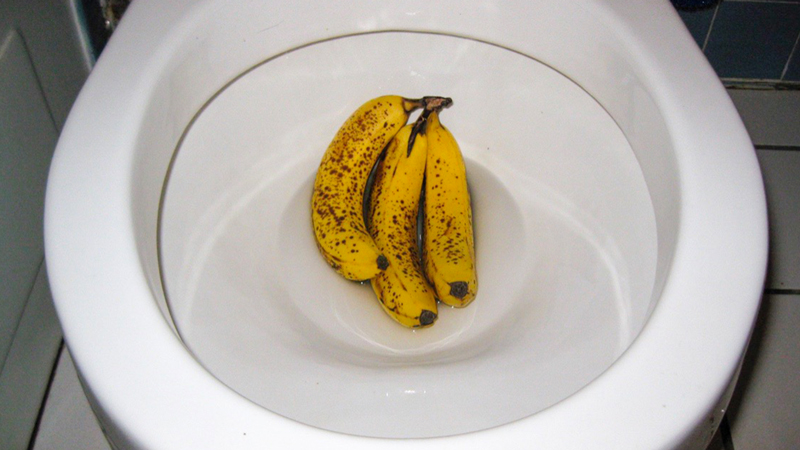Is it Rational to Dispose of Food in the Toilet?
Is it Rational to Dispose of Food in the Toilet?
Blog Article
What're your thoughts on Think Twice Before Flushing Food Down Your Toilet?

Intro
Many individuals are usually confronted with the predicament of what to do with food waste, specifically when it comes to leftovers or scraps. One common inquiry that occurs is whether it's okay to purge food down the commode. In this post, we'll look into the reasons why people could consider flushing food, the repercussions of doing so, and alternate methods for correct disposal.
Reasons why individuals could think about flushing food
Lack of recognition
Some individuals may not understand the potential harm triggered by purging food down the commode. They might mistakenly think that it's a safe technique.
Ease
Flushing food down the toilet may feel like a fast and simple service to taking care of undesirable scraps, particularly when there's no close-by garbage can offered.
Laziness
In many cases, individuals may just choose to flush food out of sheer idleness, without taking into consideration the consequences of their actions.
Effects of flushing food down the commode
Ecological influence
Food waste that ends up in waterways can add to pollution and harm water ecological communities. Furthermore, the water used to flush food can stress water sources.
Pipes issues
Flushing food can cause stopped up pipes and drains, causing costly pipes repairs and inconveniences.
Sorts of food that should not be purged
Coarse foods
Foods with coarse textures such as celery or corn husks can get tangled in pipes and create obstructions.
Starchy foods
Starchy foods like pasta and rice can soak up water and swell, leading to blockages in pipelines.
Oils and fats
Greasy foods like bacon or food preparation oils should never be purged down the bathroom as they can solidify and cause clogs.
Appropriate disposal approaches for food waste
Utilizing a garbage disposal
For homes outfitted with garbage disposals, food scraps can be ground up and purged through the plumbing system. Nevertheless, not all foods are suitable for disposal in this manner.
Recycling
Specific food packaging products can be reused, lowering waste and minimizing environmental influence.
Composting
Composting is an eco-friendly method to throw away food waste. Organic products can be composted and made use of to improve soil for horticulture.
The relevance of appropriate waste monitoring
Minimizing environmental injury
Correct waste monitoring techniques, such as composting and recycling, aid decrease contamination and preserve natural deposits for future generations.
Safeguarding pipes systems
By staying clear of the method of flushing food down the commode, homeowners can avoid pricey plumbing fixings and maintain the integrity of their plumbing systems.
Final thought
To conclude, while it may be appealing to flush food down the toilet for ease, it is essential to understand the potential effects of this activity. By adopting correct waste administration practices and disposing of food waste sensibly, individuals can add to healthier pipes systems and a cleaner environment for all.
FLUSH FOOD DOWN THE TOILET?
FLUSHING FOOD CAN CAUSE BLOCKED DRAINS IN YOUR HOME
All of the plumbing fixtures in your home are connected to the same sewer pipe outside of your home. This outdoor sewer pipe is responsible for transporting all the wastewater from your home to the Council sewer mains. Even small pieces of food that go down the kitchen sink can cause problems for your sewer. It should therefore be obvious that flushing larger bits of food, such as meat, risks a clog in either the toilet itself or the sewer pipes. Flushing greasy food is even more problematic because oil coagulates when it cools, coating the interior lining of your pipes.
THE TOILET IS NOT A BIN
Food isn’t the only thing that people shouldn’t be flushing down the toilet. People use the toilet to dispose of all kinds of things such as tampons, makeup wipes, dental floss, kitty litter and even underwear. Water goes to great lengths to educate residents about the high costs and stress placed on wastewater treatment systems simply from people flushing the wrong stuff down the toilet. It costs taxpayers millions of dollars each year, and homeowners thousands in blocked drain repairs.
FLUSHING FOOD IS A WASTE OF WATER
Flushing food is a waste of our most precious resource - water. In June this year Level 1 water restrictions were introduced to protect water supply from drought conditions. Much of New South Wales continues to be affected by prolonged drought with recent figures revealing up to 97 per cent of the state remains in drought. Depending on whether you have a single or dual flush toilet, every single flush uses between five and 11 litres of water. In the current climate this is a huge amount of water to be wasting on flushing food that should be placed in the bin (or better yet, the compost).
https://www.jabplumbingsolutions.com.au/blog/can-you-flush-food-down-the-toilet

Hopefully you enjoyed our excerpt on What Can Happen If You Flush Food Down the Toilet?. Thanks a lot for finding the time to read through our content. Make sure you take a moment to share this entry if you liked it. Many thanks for your time. Don't hesitate to visit our blog back soon.
Book With Us Today! Report this page